Does Your Logo Have Branding Goals in Mind?

Your brand identity defines your company and should be reflected in everything you do.
Typically, consumers have to have your brand impressed upon them five to seven times before it sticks in their minds. Other studies find that presenting the brand in a consistent way increases revenue by 23 percent. With that in mind, it only makes sense to ensure that your logo aligns with your overall brand image and goals.
There are a lot of factors that come into play when choosing a logo to represent your brand. Some are more vital than others to your overall brand image. Here are six factors to consider when designing a logo:
1. Do the Colors Make Sense?
If you've been in business for a while, then you might already have set company colors that you use in your website design, copy you mail out or even in an original logo that you're ready to redesign. Take a step back and consider how these colors work for your business.
There is a psychology to color that affects how we emotionally react to something.
In a nutshell, color ties into different emotions and men and women even prefer different colors. Does your logo reflect your business's mission? If you own an organic grocery store, you're going to want to use colors people associate with nature, such as green. Different colors evoke different emotions.

Dick's Sporting Goods is known for offering all sorts of outdoor and hunting gear. Note how their logo utilizes green, which puts one in mind of the great outdoors. The entire design of the website features greens and browns. The overall design is simple, which draws attention to the colors used in the logo.
2. Is the Meaning Clear?
Some logos are so high brow that you can barely read the text or understand the meaning of the logo. If a logo should do anything, it should make it clear what it stands for. If you saw the logo as a consumer and you didn't know about your company, would you immediately understand at a minimum the name of the brand? Ideally, the logo will show the brand name as well as give a general idea what the brand is about. You can accomplish this through the fonts used and the small details, such as a simple image or even a tagline that explains the brand.
3. Does the Logo Tie Into Your Industry?
Your logo needs to make sense in your industry. For example, if you're in the construction industry, you'll want to communicate what your brand is about through the logo itself. If you do mainly excavation work, then you'd likely ask for a backhoe to be included in the design. There are many different ways to tie your logo to your industry, but consider if the logo is unique to your industry or could work in nearly any industry out there.

Take a look at Runnebohm Construction's logo. Not only do they manage to get their name in the logo, but they add what looks like the pitch of a roof over the top. It is a fairly simple design, but a quick glance also explains what the company is about and what they do. How can you incorporate what you do into your logo design?
4. Is Your Logo Capable of Scale?
Your logo should be available in a variety of sizes and dots per inch (DPI). The resolution you'll need if you place your logo on a billboard is going to be much higher than if you use your logo on a Facebook page. Consider the different ways you might use your logo and ask your designer to provide finished copy that will look good in a variety of environments.
5. Is the Style Too Trendy?
In the design world, trends come and go. It's fun to try out a new thing, but when it comes to logo design, you'll want to keep things more simple and classic. Keep in mind that this logo is going to be used for your business in multiple places for many years to come. Even if you tweak the logo and do a redesign, you'll still want it to be recognizable to consumers.
Ask your designer to stay away from anything too trendy, since trends change rapidly. Instead, stick with classic elements, simple fonts and colors that will stand the test of time.

Coca-Cola is an excellent example of a brand logo standing the test of time. The font is easy to read and only uses the brand name. It is in white on red in most cases, but they can place the letters on other backgrounds to reflect an event, changing trends or just to add some interest and it still works.
6. Does the Shape of Your Logo Work?
What about the shape of your logo? If the shape is too odd, then you might have trouble getting the logo to fit into certain types of advertising. You also need to take the time to step back and look at the logo from all angles. There are stories of logo design fails where a logo looks like something obscene or doesn't send the right message at all times. It's important to stop these issues before you use your logo with the general public.
Your Logo and Branding Goals
Your logo represents your brand, so figuring out what you want the logo to say is the first step in creating a design that will stand the test of time. While you want some versatility, you also want a logo that won't be out of style in six months. Work with your designer to ensure that your logo has the perfect mix of colors, fonts and graphic elements to send the message you want consumers to know about your company. With a little forethought, your logo might just become as popular one day as Nike or Coca-Cola's.

Subscribe to Our Newsletter!
Latest in Marketing









